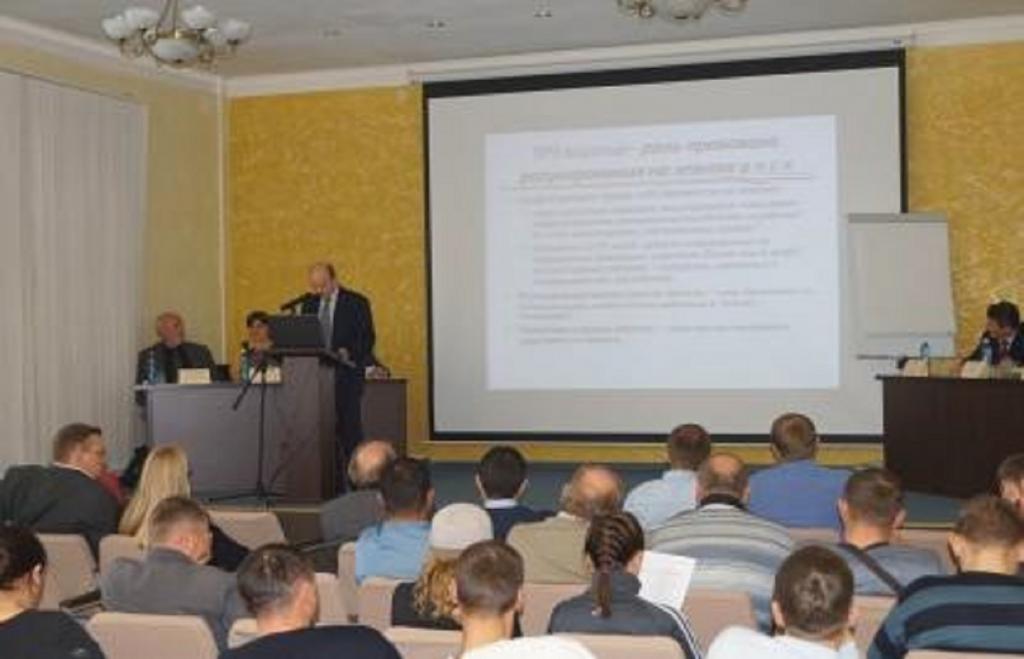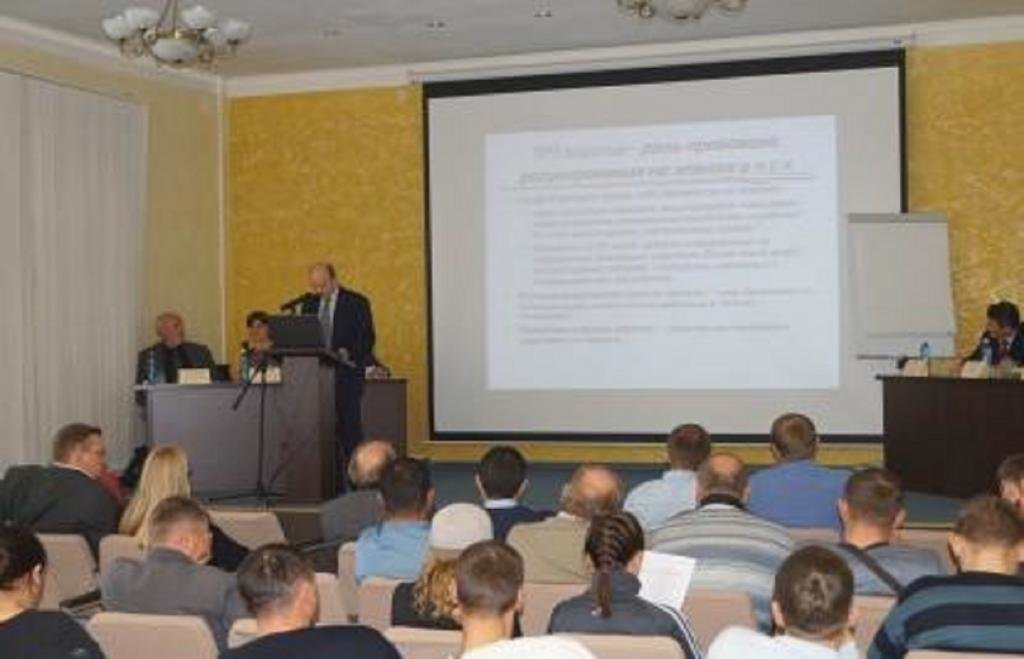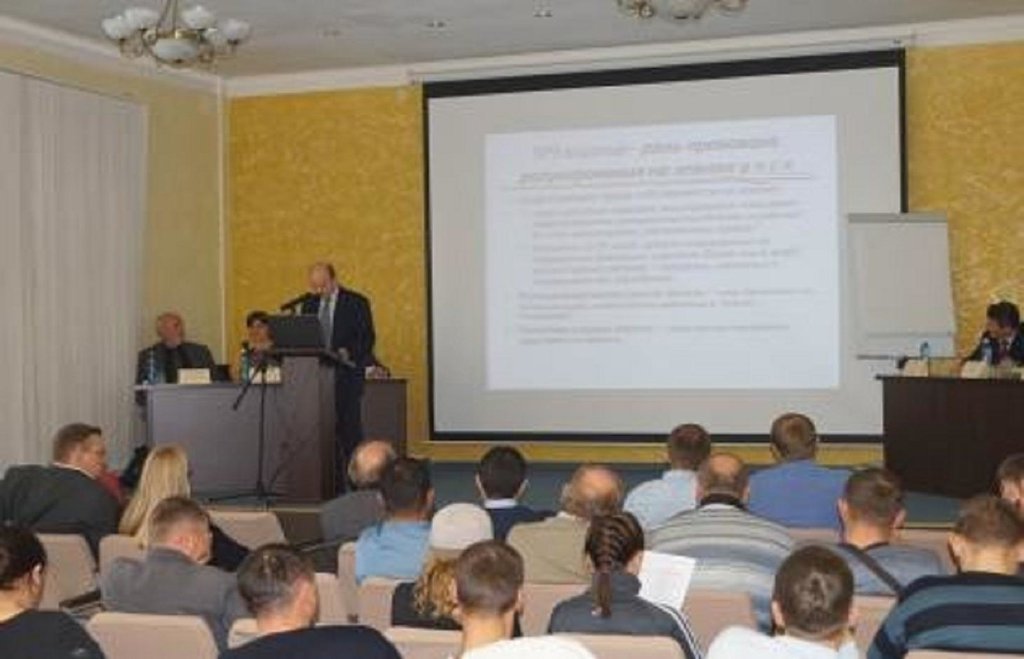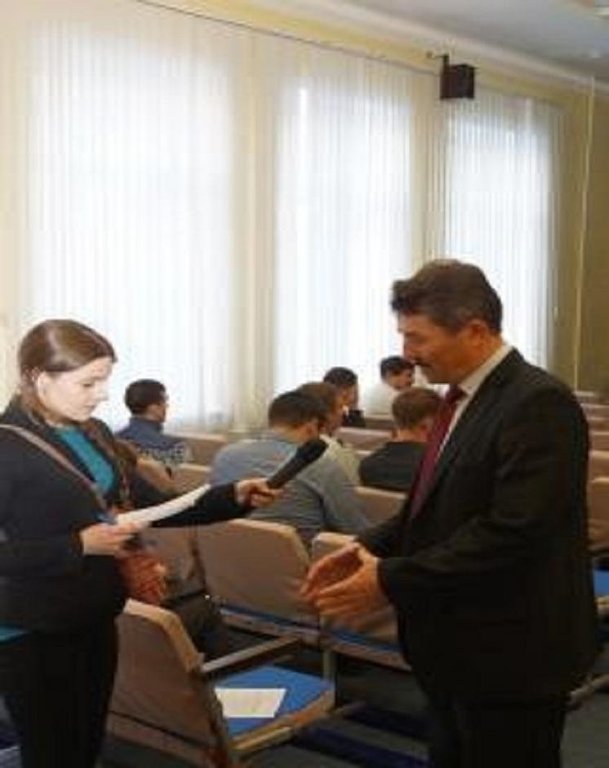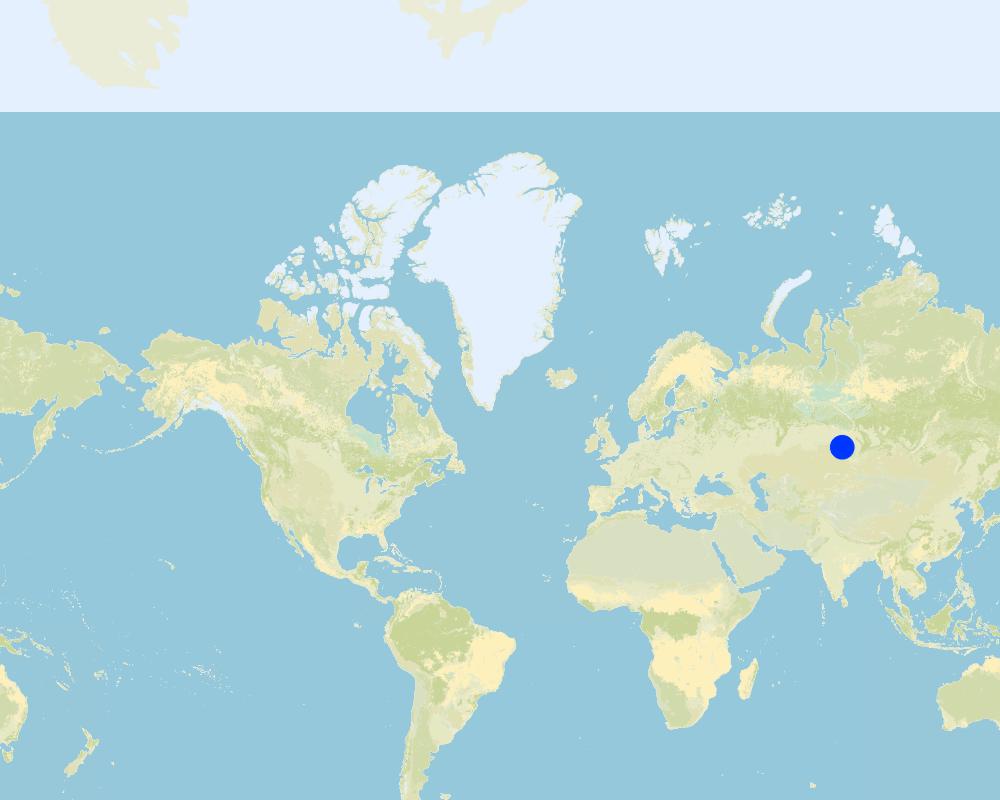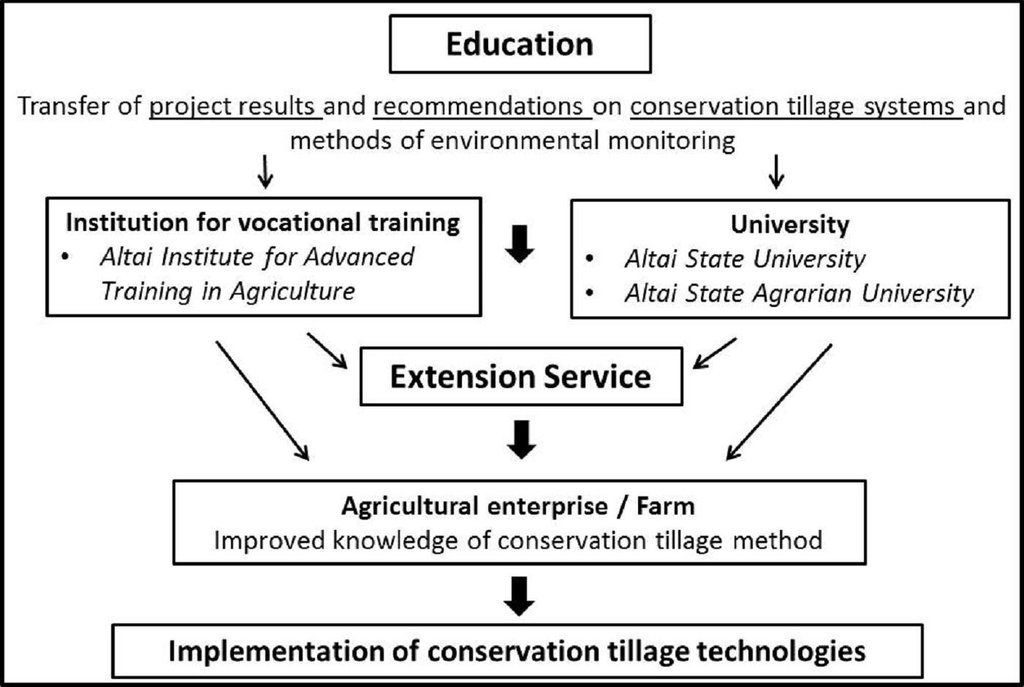Vocational Training [รัสเซีย]
- ผู้สร้างสรรค์:
- การอัพเดท:
- ผู้รวบรวม: Peter Liebelt
- ผู้เรียบเรียง: –
- ผู้ตรวจสอบ: David Streiff
Профессиональное обучение
approaches_2544 - รัสเซีย
ดูส่วนย่อย
ขยายทั้งหมด ย่อทั้งหมด1. ข้อมูลทั่วไป
1.2 รายละเอียดที่ติดต่อได้ของผู้รวบรวมและองค์กรที่เกี่ยวข้องในการประเมินและการจัดเตรียมทำเอกสารของแนวทาง
ผู้เชี่ยวชาญ SLM:
Hiller Karsten
Martin-Luther University Halle-Wittenberg
ผู้เชี่ยวชาญ SLM:
Herzfeld Thomas
Martin-Luther University Halle-Wittenberg
ผู้เชี่ยวชาญ SLM:
Illiger Patrick
Martin-Luther University Halle-Wittenberg
ผู้เชี่ยวชาญ SLM:
Jelinek Ladislav
Martin-Luther University Halle-Wittenberg
ผู้เชี่ยวชาญ SLM:
Wust Andreas
Leibniz-Institut für Länderkunde, Leipzig
ผู้เชี่ยวชาญ SLM:
Kasarjyan Milada
Martin-Luther University Halle-Wittenberg
ผู้เชี่ยวชาญ SLM:
Bavorova Miroslava
Martin-Luther University Halle-Wittenberg
ผู้เชี่ยวชาญ SLM:
Imamverdiyev Nizami
Martin-Luther University Halle-Wittenberg
ผู้เชี่ยวชาญ SLM:
Kley Dorothee
Martin-Luther University Halle-Wittenberg
ผู้เชี่ยวชาญ SLM:
Frühauf Manfred
Martin-Luther University Halle-Wittenberg
ผู้เชี่ยวชาญ SLM:
Bondarovich Andreay
Altai State University
ชื่อของโครงการซึ่งอำนวยความสะดวกในการทำเอกสารหรือการประเมินแนวทาง (ถ้าเกี่ยวข้อง)
Sustainable land management in the Russian steppes (KULUNDA / GLUES)ชื่อของโครงการซึ่งอำนวยความสะดวกในการทำเอกสารหรือการประเมินแนวทาง (ถ้าเกี่ยวข้อง)
Martin-Luther-University Halle-Wittenberg (Martin-Luther-University Halle-Wittenberg) - เยอรมนีชื่อของโครงการซึ่งอำนวยความสะดวกในการทำเอกสารหรือการประเมินแนวทาง (ถ้าเกี่ยวข้อง)
Altai State University (ASU) - รัสเซียชื่อของโครงการซึ่งอำนวยความสะดวกในการทำเอกสารหรือการประเมินแนวทาง (ถ้าเกี่ยวข้อง)
Leibniz Institute for Regional Geography (IfL) - เยอรมนี1.3 เงื่อนไขที่เกี่ยวข้องกับการใช้ข้อมูลที่ได้บันทึกไว้ผ่านทาง WOCAT
วันที่เก็บรวบรวมข้อมูล (ภาคสนาม):
26/07/2016
ผู้รวบรวมและวิทยากรหลักยอมรับเงื่อนไขเกี่ยวกับการใช้ข้อมูลที่ถูกบันทึกผ่านทาง WOCAT:
ใช่
1.4 การอ้างอิงถึงแบบสอบถามเรื่องเทคโนโลยี SLM
2. คำอธิบายของแนวทาง SLM
2.1 การอธิบายแบบสั้น ๆ ของแนวทาง
Regular in-service training of land use specialists and farm managers in the fields of sustainable land use management, and monitoring in the agrarian sector.
2.2 การอธิบายอย่างละเอียดของแนวทาง
การอธิบายอย่างละเอียดของแนวทาง:
Aims / objectives: By, as well as improved linkages of the agricultural consulting systems with universities and vocational training facilities,
Through targeted improved knowledge transfer, the Vocational Training Center is strengthening links between the agricultural consulting/ advisory systems, universities and vocational training facilities. The aim is to enhance capacity building and knowledge transfer for a better consultation / advisory system, especially. This concerns alternative conservation measures and SLM in rural areas. The centre and members of the different sub-projects of the KULUNDA project gave lectures covering up-to-date research results and on various topics, including SLM technologies (no-till and minimum tillage). Socio-economic and ecological impact was covered, as well as environmental monitoring. This took place at the ‘Barnaul Institute for Qualification in Agriculture’. These lectures are embedded into an existing training programme for young professionals within the agronomic service and extension service/ advisory service as well as heads of agricultural enterprises.
Through the targeted improved knowledge transfer between the agricultural consulting/ advisory systems, universities and vocational training facilities we want to strengthen the implementation of conservative conservation technologies in agricultural practice.
Methods: It is also planned to present project results on the topic of sustainable land management in the State Agrarian University in Barnaul, which is the main training centre for future agronomists. This presentation takes different forms – for example through poster presentations or conferences. The implementation courses material/ modules are partially running (for lectures at the Barnaul Institute for Qualification in Agriculture) or are under preparation. Furthermore, there is a plan to cooperate with the Altai State University to organise a seminar on the topic entitled “Laboratory analysis to investigate soil conditions”. Thus it helps to implement new methods of environmental monitoring into the current teaching program.
Stages of implementation: More recently, the project’s partner, the German company Amazone, has started an initiative of vocational training for young people in the region: these students are being given the opportunity to enhance their knowledge at the company’s production site in Samara and to learn about technical aspects of the two SLM technologies, namely no-till and minimum till.
Role of stakeholders: The measures are aimed at different stakeholder groups within the Altai Krai identified in the AKIS-Network (Agricultural Knowledge and Information System). The greatest importance is attached to the stakeholders of extension service and agricultural producers/ heads of agricultural enterprises because of the high level of dependency on the successful implementation of the SLM technologies on their knowledge and support. The managers who participated in advanced trainings are mainly from economically strong agricultural enterprises.
2.3 รูปภาพของแนวทาง
2.5 ประเทศ ภูมิภาค หรือสถานที่ตั้งที่ได้นำแนวทางไปใช้
ประเทศ:
รัสเซีย
ภูมิภาค/รัฐ/จังหวัด: :
Altai Krai
ข้อมูลเฉพาะเพิ่มเติมของสถานที่ตั้ง:
Mikhaylovski district
ความคิดเห็น:
Area of the field test
Map
×2.6 วันที่เริ่มต้นและสิ้นสุดของแนวทาง
ระบุปีที่เริ่ม:
2013
การสิ้นสุดลง (ถ้าแนวทางไม่ได้ใช้อีกต่อไป):
2016
2.7 ประเภทของแนวทาง
- แบบดั้งเดิม/ แบบพื้นเมิอง
2.8 เป้าหมายหรือวัตถุประสงค์หลักของแนวทาง
The Approach focused mainly on SLM with other activities (Knowledge transfer and capacity building not only in the field of soil conservation but also in the resulting socioeconomic and environmental effects and ways to improve regional development in rural areas.)
Improvement of technology adoption through: Capacity building, training and knowledge transfer. Awareness raising.
The SLM Approach addressed the following problems: There is a lack of knowledge on current scientific findings regarding innovative agronomic methods like minimum and no-till and a lack of awareness concerning the importance of the conservation technologies for economic and ecological sustainable farming strategies. A big problem is that the system for advising farmers is not sufficient, although there is a state institution for this purpose. There is a lack of awareness about the importance of vocational training, and lack of international, scientifically-based expertise in the regional institution conducting vocational training.
2.9 เงื่อนไขที่เอื้ออำนวยหรือเป็นอุปสรรคต่อการนำเทคโนโลยีภายใต้แนวทางนี้ไปปฏิบัติใช้
บรรทัดฐานและค่านิยมทางสังคม วัฒนธรรม ศาสนา
- เป็นอุปสรรค
Insufficient acceptance by land users of new and externally developed methods. Historically-caused low levels of trust among farmers/ land users that, amongst others, limits the transfer of ‘good farming practices’.
Treatment through the SLM Approach: Awareness raising, training and knowledge sharing for environmental problems due to non-adapted farming systems.
Specifically targeted policies (e.g. provision of grants or credit for the establishment of producer groups) and awareness raising.
การมีไว้ให้หรือการเข้าถึงแหล่งการเงินและบริการ
- เป็นอุปสรรค
High cost of new minimum and no-till machinery and difficult access to credits. Budget limitations are proportionately greater with smaller farms (highly variable yields reduce farm profitability, limited access to external funds)
Treatment through the SLM Approach: In the training modules specialists were trained on how to improve the profitability, to work economically and rationally by implementing alternative conservation measures and SLM as well as by efficient personnel management in the agricultural enterprises.
การจัดตั้งระดับองค์กร
- เป็นอุปสรรค
Unfavourable framework conditions and low capacity of the administration to monitor the state of land and to enforce the soil protection law which would oblige land users to adopt conservation measures.
Treatment through the SLM Approach: The approach did not address this factor.
กรอบแนวทางในการดำเนินการด้านกฎหมาย (การถือครองที่ดิน สิทธิในการใช้ที่ดินและน้ำ)
- เป็นอุปสรรค
Unclear land use rights. High share of rented land. Missing incentives to stimulate land users to adopt conservation practices. Secure land use rights motivates to more conscious care for the land and stimulates farmers to adopt better practices.
Treatment through the SLM Approach: Discussion of the options to strengthen the role of ‘State Redistribution of Funding’ in favour of funding land protection.
The existing land ownership, land use rights / water rights moderately hindered the approach implementation Our findings support the evidence that land ownership is rather a hindering factor for the farmers. It has several reasons. There are still some legislative and administrative weaknesses that limit the full execution of the ownership rights (non-defined borders, lacking cadastral registration of some plots, missing owners, etc.). When farmers face such difficulties, they are less willing to invest in the own land. Furthermore, around half of the land utilised in Altai krai is owned by the state (of that around 2 mil. hectares are administered by the Redistribution Fund). The conditions under which the land is provided do not require the farmers to adopt more sustainable land practices. As above mentioned, this would call for the strengthening of the land allocation criteria. Another aspect to be considered is the capacity of the state monitoring agency (State Veterinary and Phytosanitary Controls) and if it would be capable to control the compliance of the rules provided the land use conditions are stricter.
ความรู้เกี่ยวกับ SLM การเข้าถึงการสนับสนุนด้านเทคนิค
- เป็นอุปสรรค
In Russia conventional/ traditional cultivation still prevails, although market for no-till technologies is fully developed and functional. Various machinery companies either have branches or production units in Russia.
Treatment through the SLM Approach:
3. การมีส่วนร่วมและบทบาทของผู้มีส่วนได้ส่วนเสียที่เกี่ยวข้อง
3.1 ผู้มีส่วนได้ส่วนเสียที่เกี่ยวข้องในแนวทางนี้และบทบาท
- ผู้ใช้ที่ดินระดับท้องถิ่นหรือชุมชนระดับท้องถิ่น
Farmers of the investigation area in the district Altai Krai
There are more men working in the area of crop production as women. More men participated
- ผู้เชี่ยวชาญ SLM หรือที่ปรึกษาการเกษตร
Advisers in the field of cropping systems
- รัฐบาลแห่งชาติ (ผู้วางแผน ผู้ทำการตัดสินใจ)
Ministry of Agriculture
- Staff member of the project
German and Russian scientists of the project
3.2 การเกี่ยวข้องของผู้ใช้ที่ดินระดับท้องถิ่นหรือชุมชนระดับท้องถิ่นในช่วงต่างๆของแนวทาง
| ความเกี่ยวข้องของผู้ใช้ที่ดินระดับท้องถิ่นหรือชุมชนระดับท้องถิ่น | ระบุผู้ที่มีส่วนเกี่ยวข้องและอธิบายกิจกรรม | |
|---|---|---|
| การริเริ่มหรือการจูงใจ | ปฏิสัมพันธ์ | The embedded training measures modules are embedded in the already existing training program of vocational training centre in Barnaul. At the last seminar land users and specialists were the target audience. Interactive lectures (teaching modules) were held. The participants of the seminar were actively involved by asking questions as well as by intensive discussions. |
| การวางแผน | ไม่มี | The planning of the approach was first of all project-internal in consultation with the head of the regional vocational training institute in Barnaul. |
| การดำเนินการ | ปฏิสัมพันธ์ | Interactive lectures to agricultural consultants/ extension agents/ advisory services and farmers on latest findings and recommendations of the KULUNDA project. Following the lectures the participants could ask questions and discuss the various research results presented. In addition, brochures and USB-sticks containing project results and lectures were distributed. |
| การติดตามตรวจสอบหรือการประเมินผล | ปฏิสัมพันธ์ | Evaluation after the event through project intern discussions as well as interviews with regional stakeholder |
| Research | ไม่มี | The vocational training is mainly intended to inform the audience (target groups) about the scientific results and their application-specific relevance by the scientific project staff. The audience is not involved in research work. |
3.3 แผนผังแสดงขั้นตอนการทำงาน (ถ้ามี)
คำอธิบาย:
The chart is intended to show the importance of the vocational training by the 'Institute for advanced training in agriculture' concerning knowledge transfer and capacity building. Knowledge transfer takes place either directly or indirectly through the advisory service to the farmers. Due to the capacity building measures and resulting better knowledge of the farmers about conservation technologies this approach will better enable them to implement conservation technologies.
ผู้เขียน:
Peter Liebelt
3.4 การตัดสินใจเลือกใช้เทคโนโลยี SLM
ระบุผู้ที่ทำการตัดสินใจเลือกเทคโนโลยีมากกว่าหนึ่งวิธีไปปฏิบัติใช้:
- ผู้เชี่ยวชาญ SLM เป็นผู้ตัดสินใจหลัก ที่ติดตามให้คำปรึกษากับผู้ใช้ที่ดิน
การอธิบาย:
The SLM specialists of the the KULUNDA project mainly make the decisions on the choice of the SLM technology in cooperation with the farmers.
Decisions on the method of implementing the SLM Technology were made by Project staff. At the beginning of the project a large interview campaign with relevant local stakeholders was conducted by the scientists of the KULUNDA-project. Based on the survey results, a decision on the implementation measures were made by the scientific staff on the German and Russian site with consultation with local stakeholder groups.
4. การสนับสนุนด้านเทคนิค การสร้างขีดความสามารถ และการจัดการด้านความรู้
4.1 การสร้างขีดความสามารถ / การอบรม
ได้มีการจัดอบรมให้แก่ผู้ใช้ที่ดินหรือผู้มีส่วนได้ส่วนเสียคนอื่น ๆ หรือไม่:
ใช่
ให้ระบุว่าใครเป็นผู้ได้รับการอบรม:
- ผู้ใช้ที่ดิน
- เจ้าหน้าที่ภาคสนาม / ที่ปรึกษา
รูปแบบการอบรม:
- จัดคอร์ส
หัวข้อที่พูด:
Competitiveness of agricultural enterprises, ecologically and economically effective farm management through the use of resource-conserving crop production, costs for introducing modern tillage systems, personnel management, monitoring systems
4.2 การบริการให้คำแนะนำ
ผู้ใช้ที่ดินมีการเข้าถึงการรับบริการให้คำปรึกษาหรือไม่:
ใช่
ระบุว่ามีบริการให้คำปรึกษาหรือไม่:
- ที่ศูนย์ถาวร
การอธิบาย/แสดงความคิดเห็น:
Name of method used for advisory service: Vocational training for land use specialists / advisers and land user; Key elements: Knowledge / exchange, Capacity building, Training of trainers
There is already mainly a governmental advisory structure. The consultants are able to make recommendations for soil conserving technologies. However, we have observed a missing international expertise and demand of consultation for the farmers.
4.3 การเสริมความแข็งแกร่งให้กับสถาบัน (การพัฒนาองค์กร)
สถาบันได้รับการจัดตั้งขึ้นมาหรือเสริมความแข็งแกร่งโดยแนวทางนี้หรือไม่:
- ไม่
4.4 การติดตามตรวจสอบและประเมินผล
การติดตามตรวจสอบและประเมินผลเป็นส่วนหนึ่งของแนวทางหรือไม่:
ใช่
ความคิดเห็น:
Technical aspects were ad hoc monitored by project staff, government, land users through observations; indicators: information and discussion on the technical obervation results relating conservation technologies by the target groups
Technical aspects were ad hoc monitored by project staff, government, land users through measurements; indicators: information and discussion on the technical measurement results relating conservation technologies by the target groups
Economic / production aspects were ad hoc monitored by project staff, government, land users through observations; indicators: information and discussion on the economic obervation results relating economic parametres (margin profit and others) by the target groups
Economic / production aspects were None monitored by project staff, government, land users through measurements; indicators: information and discussion on the technical measurement results relating conservation technologies by the target groups
Management of Approach aspects were None monitored by None through observations; indicators: information and discussion on the management obervation results relating the approach by the target groups
There were no changes in the Approach as a result of monitoring and evaluation
There were no changes in the Technology as a result of monitoring and evaluation
4.5 การวิจัย
การวิจัยเป็นส่วนหนึ่งของแนวทางหรือไม่:
ไม่ใช่
5. การสนับสนุนด้านการเงินและวัสดุอุปกรณ์
5.1 ระบุงบประมาณประจำปีสำหรับแนวทาง SLM นี้
ถ้าหากว่างบประมาณประจำปีไม่เป็นที่ทราบแน่นอน ให้ระบุช่วงลงไป:
- 2,000-10,000
แสดงความคิดเห็น (แหล่งของการระดมทุน ผู้บริจาคคนสำคัญ):
Approach costs were met by the following donors: international (German Ministry of Education and Research, BMBF): 100.0%
5.2 การสนับสนุนด้านการเงิน / วัสดุอุปกรณ์ให้แก่ผู้ใช้ที่ดิน
ผู้ใช้ที่ดินได้รับการสนับสนุนด้านการเงิน / วัสดุอุปกรณ์ไปปฏิบัติใช้เทคโนโลยีหรือไม่:
ใช่
ถ้าใช่ ให้ระบุประเภทของการสนับสนุน เงื่อนไขและผู้จัดหามาให้:
The Altai Institute for Advanced Training in Agriculture that is publicly founded provided personnel staff, an auditorium and hast made the promotion for the event.
5.3 เงินสนับสนุนสำหรับปัจจัยนำเข้า (รวมถึงแรงงาน)
- อื่น ๆ
| อื่นๆ (ระบุ) | เห็นด้วยระดับไหน | ระบุเงินสนับสนุน |
|---|---|---|
| preparation of training material | ได้รับการช่วยเหลือทางการเงินแบบเต็ม |
ความคิดเห็น:
The approach of vocational training was only to inform the land users without financial inputs in equipment and others.
5.4 เครดิต
มีการจัดหาเครดิตมาให้ภายใต้แนวทาง SLM หรือไม่:
ไม่ใช่
6. การวิเคราะห์ผลกระทบและการสรุป
6.1 ผลกระทบของแนวทาง
ช่วยให้ผู้ใช้ที่ดินนำเอาเทคโนโลยี SLMไปใช้และบำรุงรักษาสภาพไว้ได้หรือไม่:
- ไม่ใช่
- ใช่ เล็กน้อย
- ใช่ ปานกลาง
- ใช่ อย่างมาก
The approach vocational training helps to improve the quality of advisory service and to inform directly the land user. It have been shown that the vocational training (Institute for Advanced Training in Agriculture) is a suitable way for knowledge transfer. The higher knowledge of the land user and land use specialists / advisers help to implement new conservation technologies. Vocational training of course is not a new invention but the aim of the project initiated learning modules was to present information that are up-to-date and on in the field of con
ทำให้กลุ่มด้อยโอกาสมีอำนาจทางสังคมและเศรษฐกิจหรือไม่:
- ไม่ใช่
- ใช่ เล็กน้อย
- ใช่ ปานกลาง
- ใช่ อย่างมาก
The implementation of the technology is not primarily aimed at these issues.
ปรับปรุงประเด็นของการถือครองที่ดินหรือสิทธิในการใช้ ซึ่งขัดขวางการนำเทคโนโลยีไปใช้ให้ดีขึ้น:
- ไม่ใช่
- ใช่ เล็กน้อย
- ใช่ ปานกลาง
- ใช่ อย่างมาก
The problem is unlikely to be overcome in the near future.
Did other land users / projects adopt the Approach?
- ไม่ใช่
- ใช่ เล็กน้อย
- ใช่ ปานกลาง
- ใช่ อย่างมาก
Did the Approach lead to improved livelihoods / human well-being?
- ไม่ใช่
- ใช่ เล็กน้อย
- ใช่ ปานกลาง
- ใช่ อย่างมาก
By implementing the new conservation technologies the sustainability of farming systems in both the ecological and the economic sense increases. therefor the technologies are able to improve human well-being especially in rural areas where agriculture has a great importance for livelihood and human well-being. The technologies help to protect soil as production base for farming. Whether the population participate on the increase of profit depends on the management of farm enterprises that decide on further investments for instance in salary or social projects.
Did the Approach help to alleviate poverty?
- ไม่ใช่
- ใช่ เล็กน้อย
- ใช่ ปานกลาง
- ใช่ อย่างมาก
The implementation of the technologies min till and no till protect the soil as an important living and economic basis
6.2 แรงจูงใจหลักของผู้ใช้ที่ดินเพื่อที่จะนำ SLM ไปปฏิบัติใช้
- การผลิตที่เพิ่มขึ้น
To minimize fluctuations in yield and to secure yield through a higher sustainability
- กำไร (ความสามารถ) อัตราส่วนค่าใช้จ่ายต่อผลประโยชน์ที่เพิ่มขึ้น
- ภาระงานลดลง
The reduction of workload is important especialy in terms of the large farm sizes.
- การจ่ายเงินหรือการช่วยเหลือ
- การเข้าร่วมสมทบในขบวนการ โครงการ กลุ่ม เครือข่าย
Affiliation with the KULUNDA project
6.3 ความยั่งยืนของกิจกรรมของแนวทาง
ผู้ใช้ที่ดินสามารถทำให้สิ่งต่างๆ ที่ได้ปฏิบัติใช้โดยแนวทางนี้ยั่งยืนได้หรือไม่ (โดยไม่มีการสนับสนุนจากภายนอก):
- ใช่
ถ้าตอบว่าใช่ ให้อธิบายว่าอย่างไร :
The Altai Institute of vocational training can continue with the help of learning modules and various information materials that we prepared as implementation products under the project.
6.4 จุดแข็งและข้อได้เปรียบของแนวทาง
| จุดแข็ง / ข้อได้เปรียบของแนวทางในทัศนคติของผู้ใช้ที่ดิน |
|---|
| To have a platform for discussion and knowledge exchange with different national stakeholder groups as well as international scientists (How to sustain/ enhance this strength: Regular meetings for knowledge exchange.) |
| To get information about the latest international ‘trends’ in agriculture that aim at economically effective, resource-saving and environment-friendly cropping management (How to sustain/ enhance this strength: Regular presentation of innovations and new results that are up to date and on international high level.) |
| จุดแข็ง / ข้อได้เปรียบของแนวทางในทัศนคติของผู้รวบรวมหรือวิทยากรหลัก |
|---|
| Capacity building (How to sustain/ enhance this strength: Through better linkage between the actors of different stakeholder groups (see point 1) and by regular teaching and consultation) |
| Better knowledge transfer (How to sustain/ enhance this strength: By presenting practice-oriented project findings, which show the current state of research.) |
|
Improved linkage between different stakeholder groups like specialists, advisers and farmers/ land users (How to sustain/ enhance this strength: By regular joint vocational workshops and seminars on education, research, consulting, needs of end users with actors of the Agricultural Knowledge and Information System network in the Altai region. For the realization of this purpose the regional “Altai Vocational Training Centre in Barnaul was and can be used as a platform. ) |
| Better consultation of land users and specialists (How to sustain/ enhance this strength: By presenting use-oriented project findings, which present the current state of research as well as discussions about the presented issues.) |
6.5 จุดอ่อน / ข้อเสียเปรียบของแนวทางและวิธีในการแก้ไข
| จุดอ่อน / ข้อเสียเปรียบในทัศนคติของผู้ใช้ที่ดิน | สามารถแก้ไขปัญหาได้อย่างไร |
|---|---|
| For land user it takes a lot of effort like high costs and time to visit the event in the capital Barnaul. |
| จุดอ่อน / ข้อเสียเปรียบในทัศนคติของผู้รวบรวมหรือวิทยากรหลัก | สามารถแก้ไขปัญหาได้อย่างไร |
|---|---|
| In contrast to the field seminar the vocational training is more theoretical, which is less attractive for farmers | Combination of different implementation measures like vocational training for the theoretical background and the field seminar to show the opportunities of technology implementation in practice. |
7. การอ้างอิงและการเชื่อมต่อ
7.1 วิธีการหรือแหล่งข้อมูล
- ไปเยี่ยมชมภาคสนาม การสำรวจพื้นที่ภาคสนาม
- การสัมภาษณ์กับผู้ใช้ที่ดิน
ลิงก์และโมดูล
ขยายทั้งหมด ย่อทั้งหมดลิงก์
ไม่มีลิงก์
โมดูล
ไม่มีโมดูล


